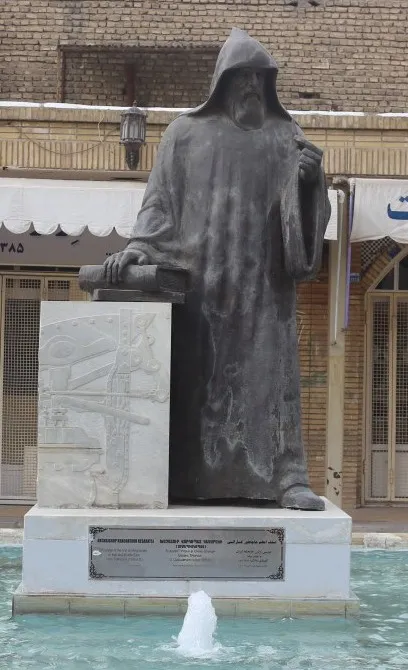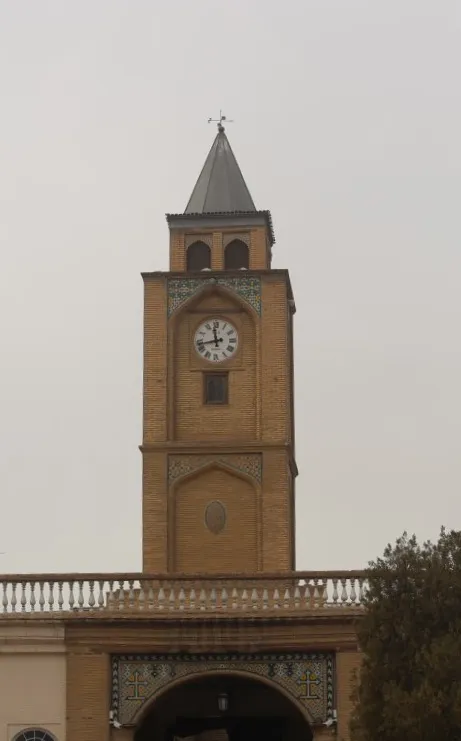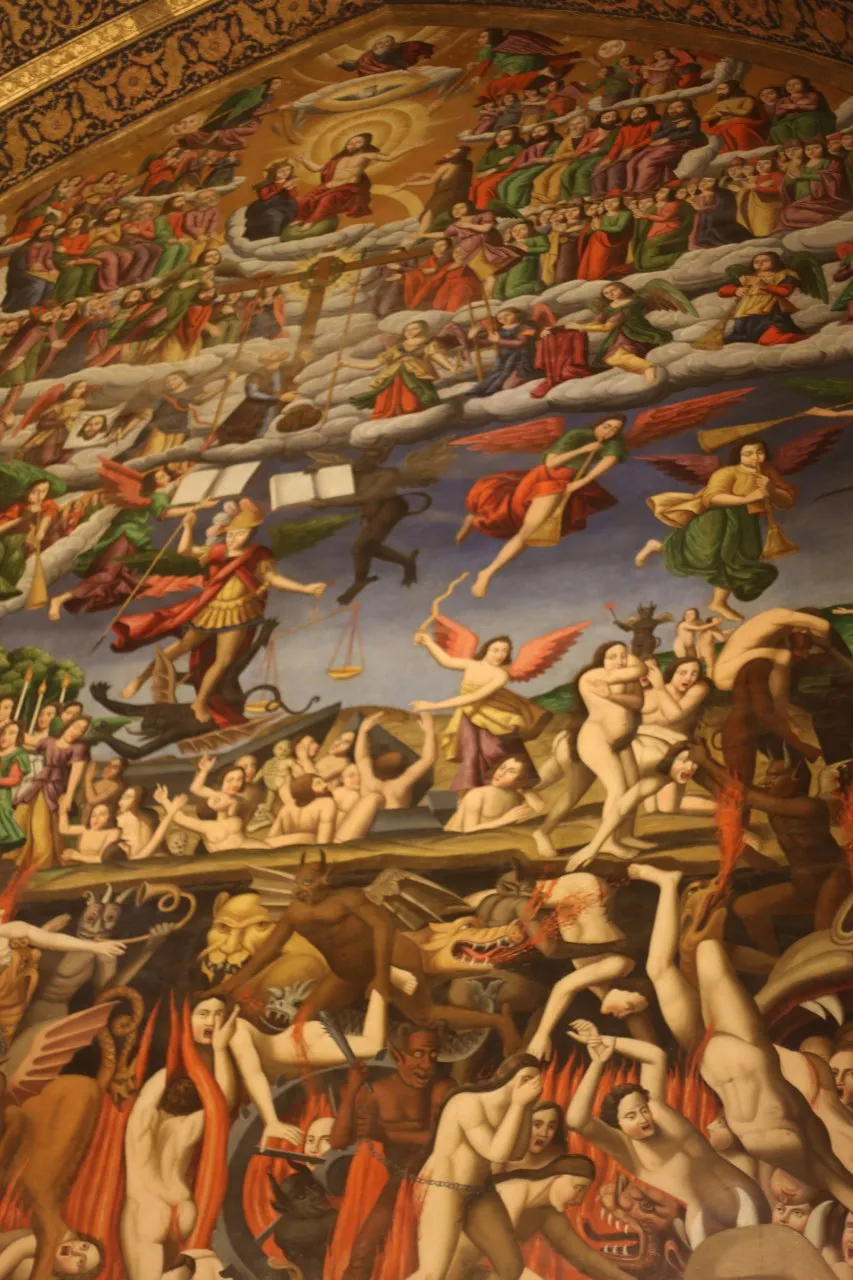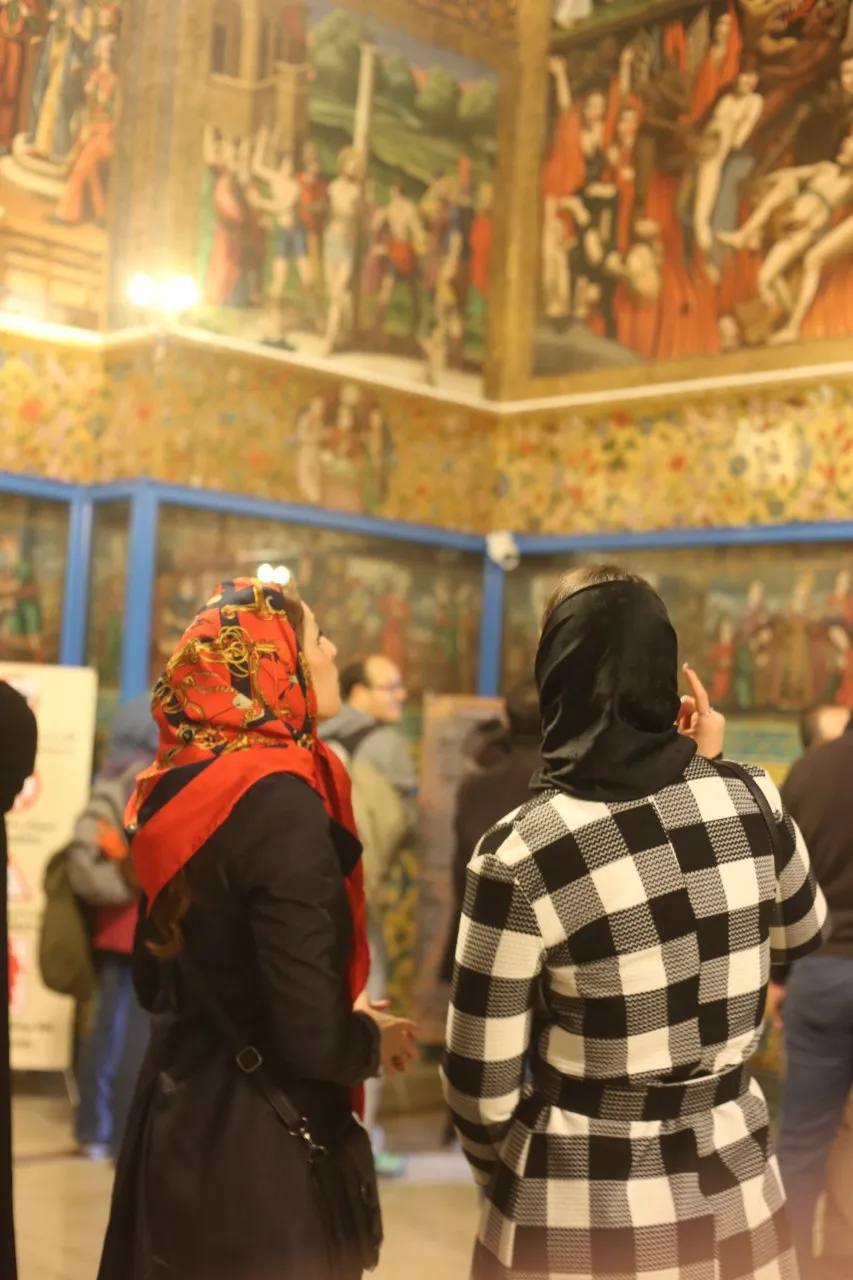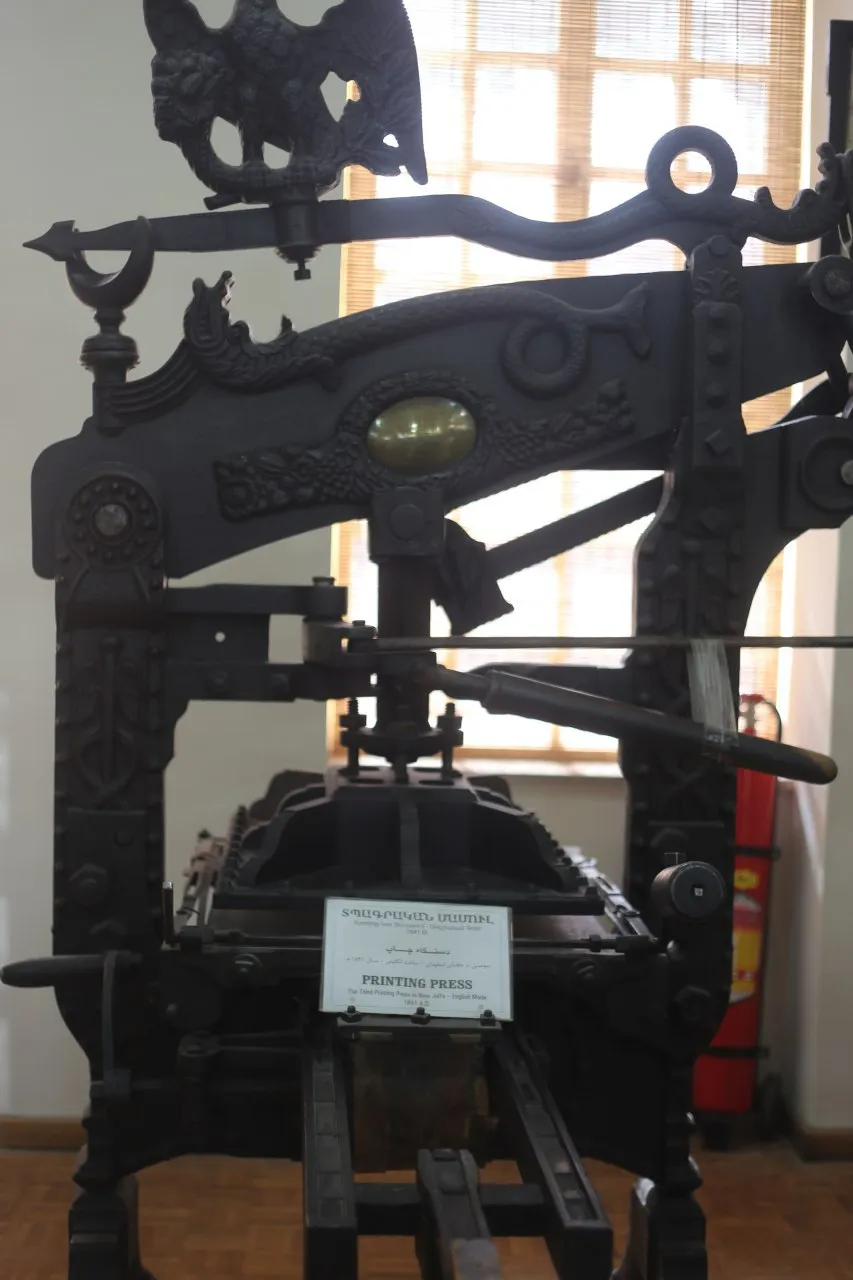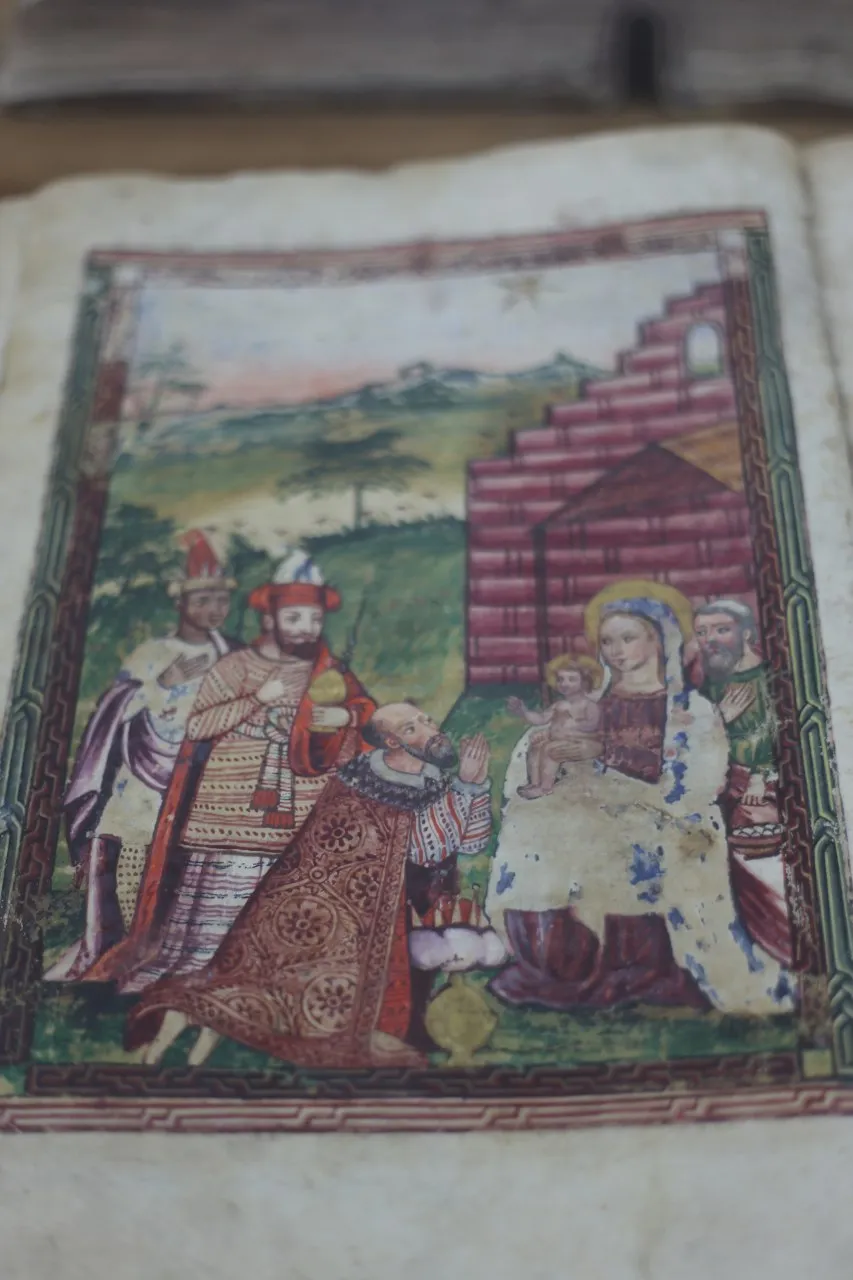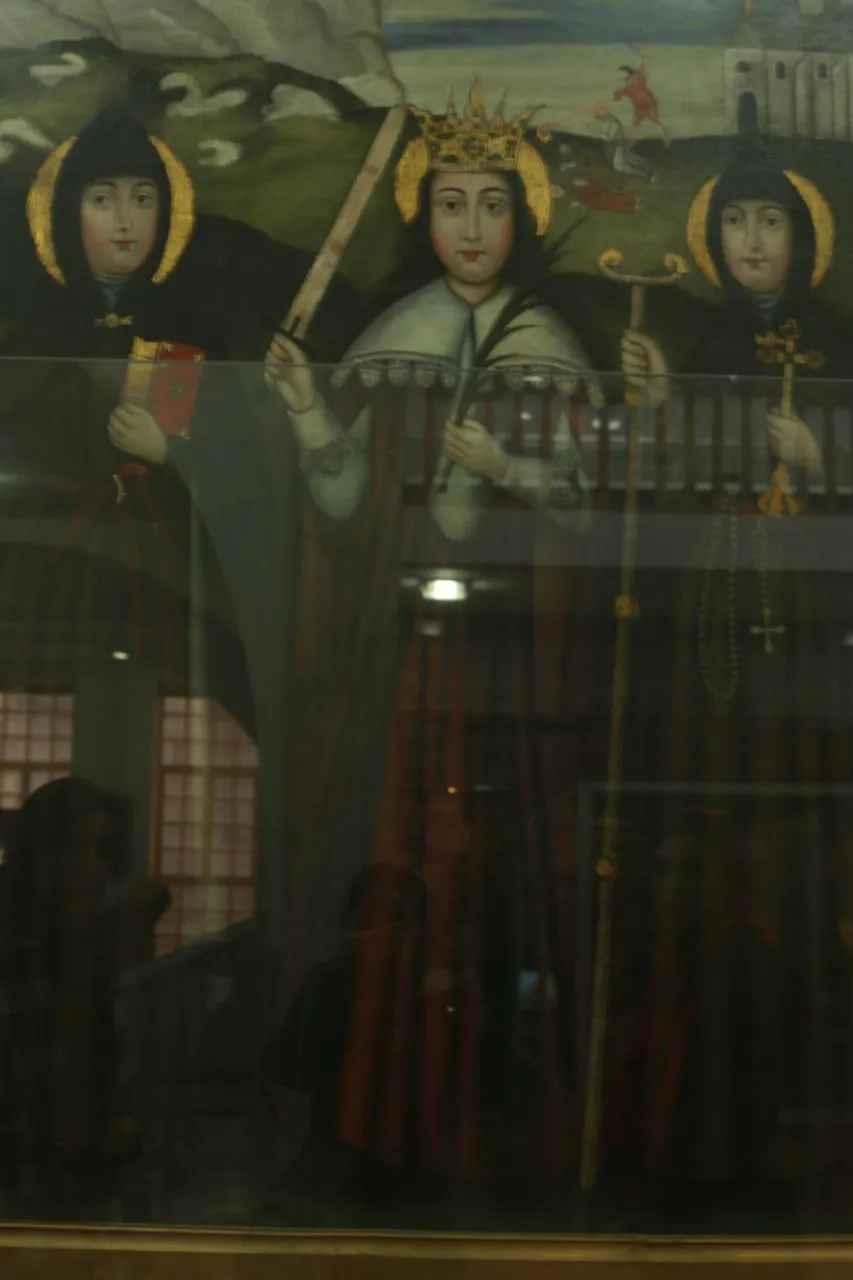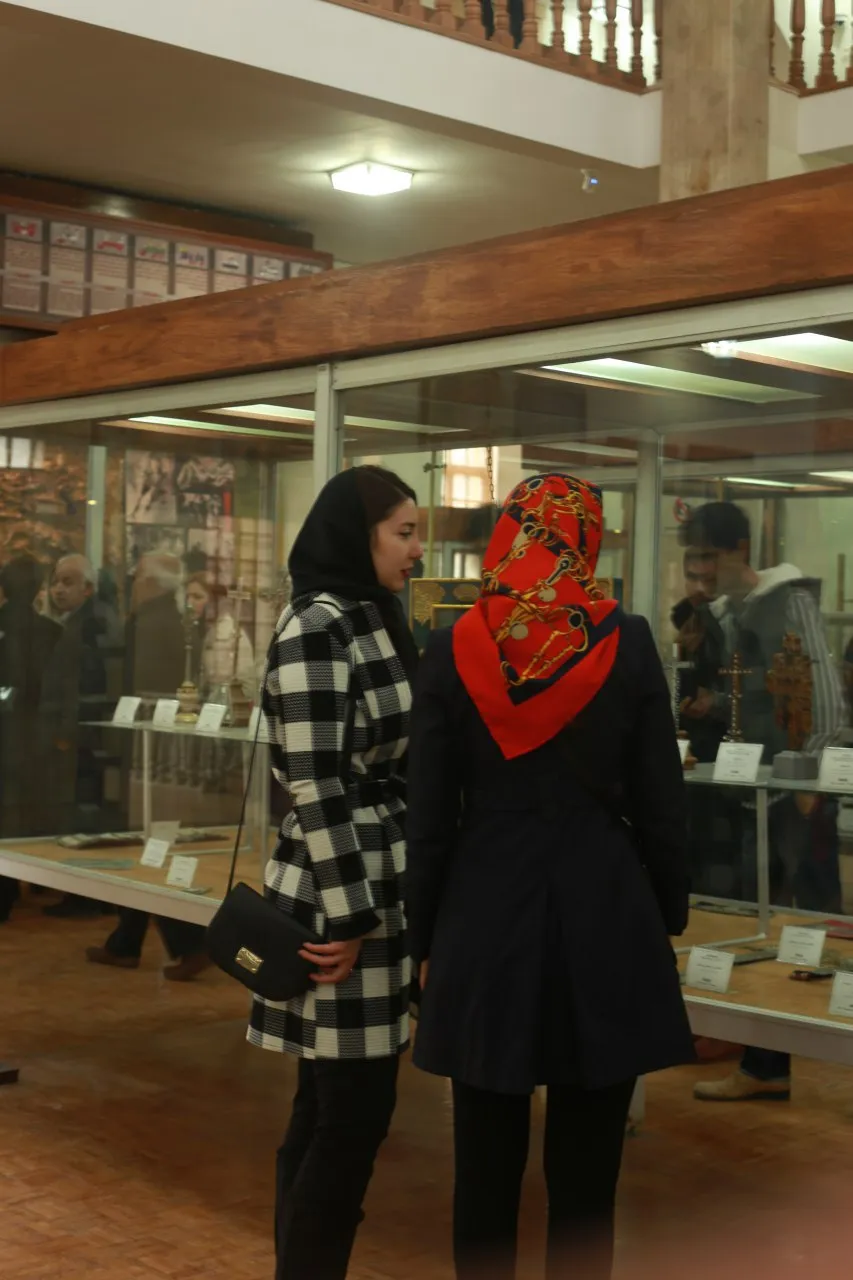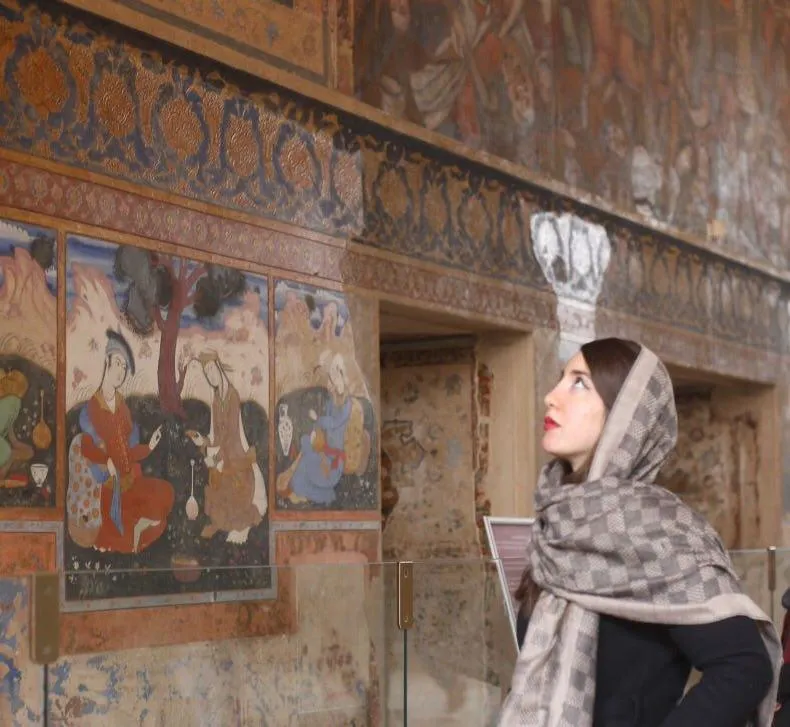
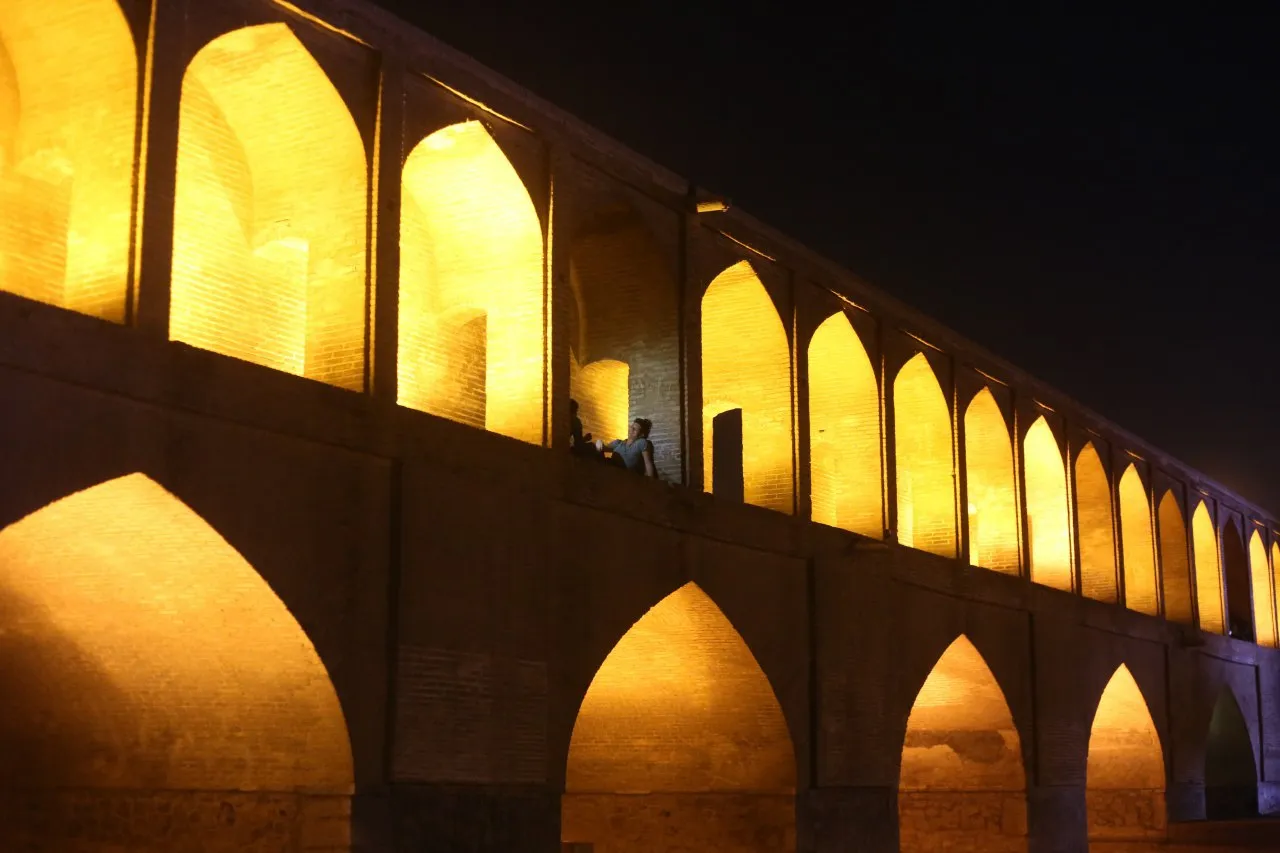
33 bridge ( Si-o-se Pol )is a stone double deck arch bridge in Isfahan, Iran. It is also called Siose Bridge (which in Persian means “33 Bridge” or “Bridge of 33 Arches”) or Allah-Verdi Khan Bridge.
33 Bridge is built by the chancellor Allahverdi Khan on commission from Shah Abbas whose chancelor he was.
Thirty-three bridges, a bridge with 33 spans, 295 meters in length and 14 meters in width on the Zayandeh River, Isfahan. The bridge connects Charbagh Abbasi to Charbagh.
Some Georgians believe that since the letters of the Georgian alphabet are thirty-three letters, and Allah Vrdikhan is Georgian, this bridge also has thirty-three spans, but this theory is completely rejected because the bridge initially had 40 craters.
On the other hand, experts consider the number one hundred and thirty-three related to Anahita (Goddess of Water) and believe that this bridge is like most structures. In the book of Shah Abbas's life, he wrote about the celebration of Nowruz, which the Shah held in the year 1018 AH on the bridge of thirty-three bridges.Thirty-three bridges, beautiful bridge for walking along the high Isfahan nights. The bridge can be a unique experience for the long nights of Isfahan for any tourist who has traveled to this country to enjoy Iran's rich culture.
One of the best times to visit 33 bridges is at night. I recommend that the beautiful landscape of the bridge be illuminated and do not miss the beautiful reflection of the bridge on the Zayandeh Rood River.
Unfortunately, due to droughts in most of the months the Zayandeh River is dry.
If you are planning to travel to Isfahan, it is the best time to travel during the days of April, December and January. In these months, there is a brilliant, sparkling river.
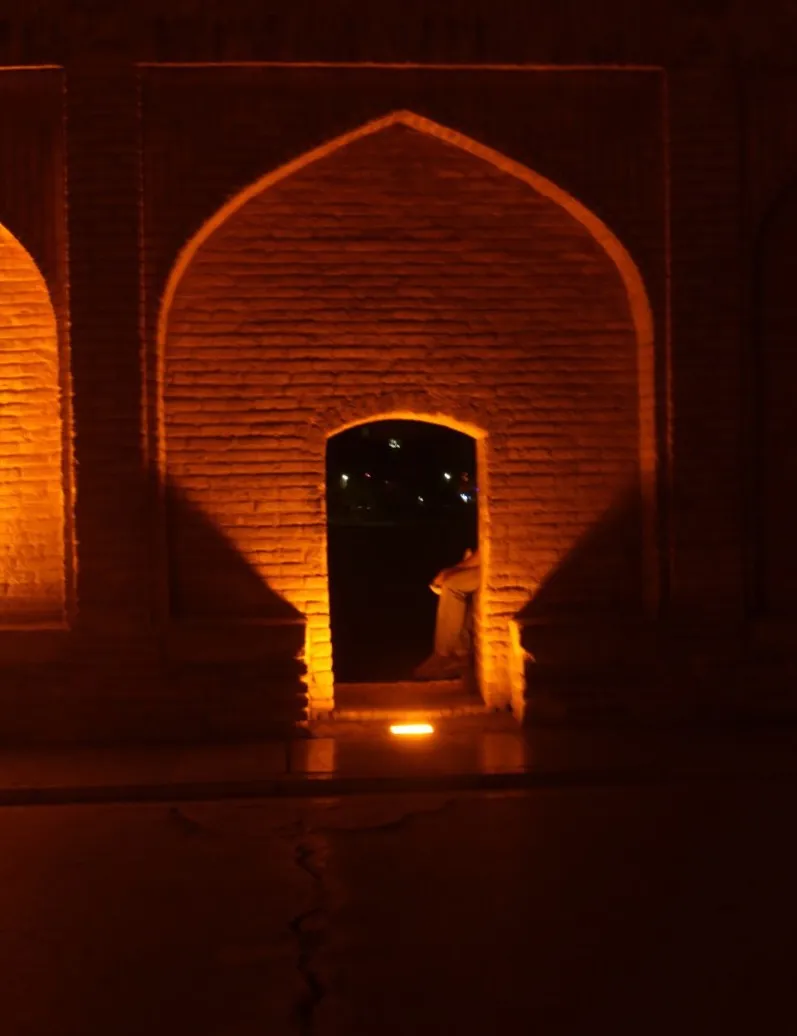
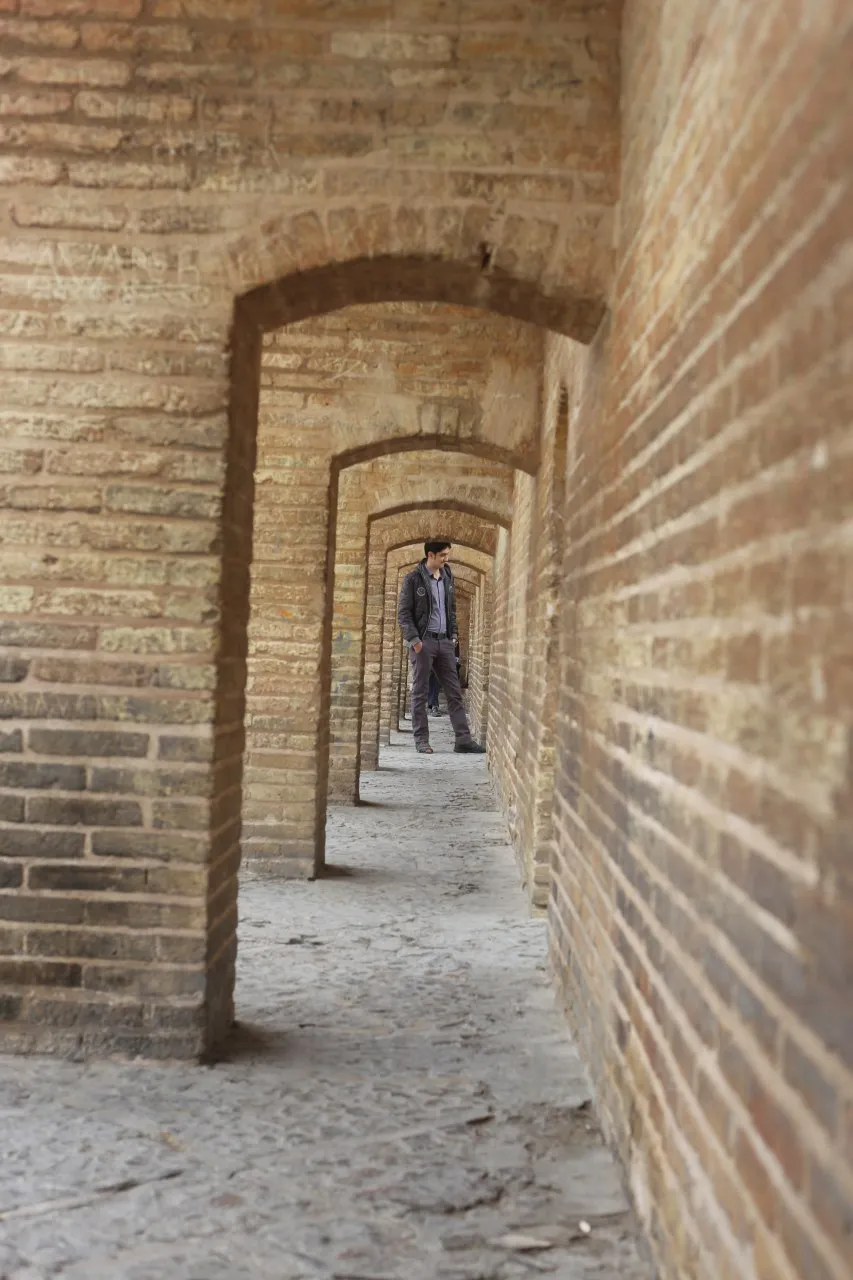
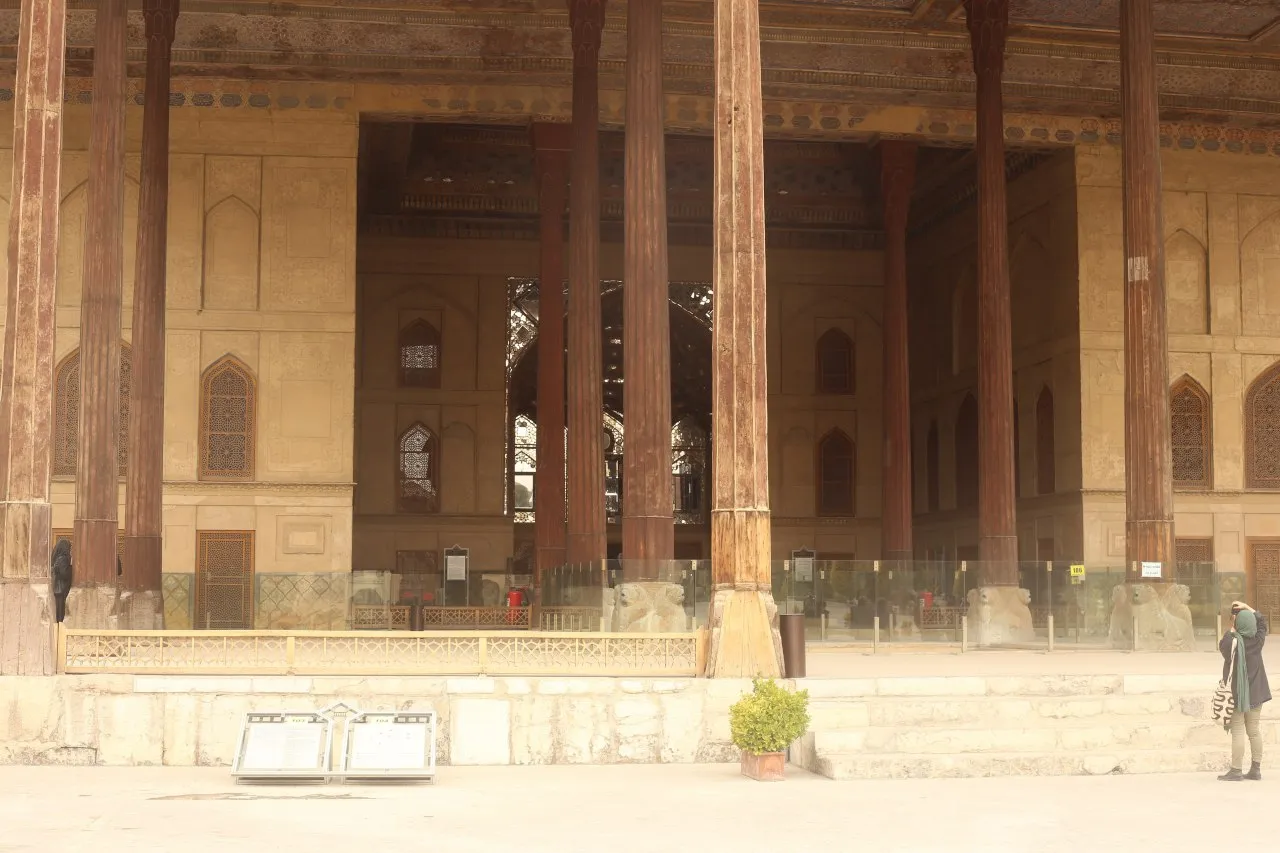
Chehel Sotun Palace is one of the main attractions of Isfahan tourism, which has only attracted many tourists from all over the world by doubling its pillars.
Chehel Sotun Palace is one of the most spectacular and historic places of Isfahan province and is an example of a royal garden built during the Safavid period.
The concept of 40 pillars is reflected in the reflection of the 20 pillars in the existing pond facing this mansion.
The number 40 in Iran represents the plurality in number And represents the large number of pillars in the magnificent Hell's Palace.
Chehelsoton Gardens of Isfahan is an example of a royal garden from the Safavid period. The construction of the Chehelsotun Hall is attributed to the Second Shah Abbas and sets the completion date to 1057 AH. This garden was used to receive guests from the king's court at ceremonies and celebrations. With the onset of the reign of Shah Abbas II, the Chehelsotun Mansion has been developed and has added forums and porches to it.
In the 12th year of the reign of King Soltan Hussein, the Chehelsotun palace was burned and then the repairs were done there most likely in the past.
The architecture of this palace is a combination of Chinese, Iranian and European art.
The pillars of this porch are octagonal and they are made of wood and pine.
The four middle columns are located on four stone like lions.
The paintings in the palace central hall, some of which were painted in the Qajar era, include the introduction of Shah Abbas I and II, and Shah tahmasb from the prince of Turks and India, And also the war of Shah Isma'il I is with Uzbakan.
Two other images, one opposite of the entrance to the hall and the other against it, shows Chaldoran War during the time of Shah Isma'il I and the Karnal War during Nader Shah Afshar.
These two images were painted in early Qajar era. On the sides of the Hall, there are rooms that are currently being used for seasonal exhibiti
ons.
These rooms also include paintings, some of which are considered a masterpiece of painting.
Most of these paintings were hidden under a layer of plaster, which, come out and repaired with the help of the experts.
On the two sides of the Central Hall of the Cheleston Mansion, pictures of ambassadors and Europeans who were at that time in Isfahan have been painted. These paintings have been painted by two Dutch painters (Anjel) and (Lukar / Lokar).
Royal Hall of Fame Gilding And the rooms around the mirror hall and Great Hallows of the Kingdom Hall representing the Safavid Kings.
Nowadays, the Chehelsotun mansion is a gardens where the central hall of the site displays some of the artworks of various periods in Iran, visited by foreign tourists and domestic guests.
✨✨✨✨✨✨✨✨✨
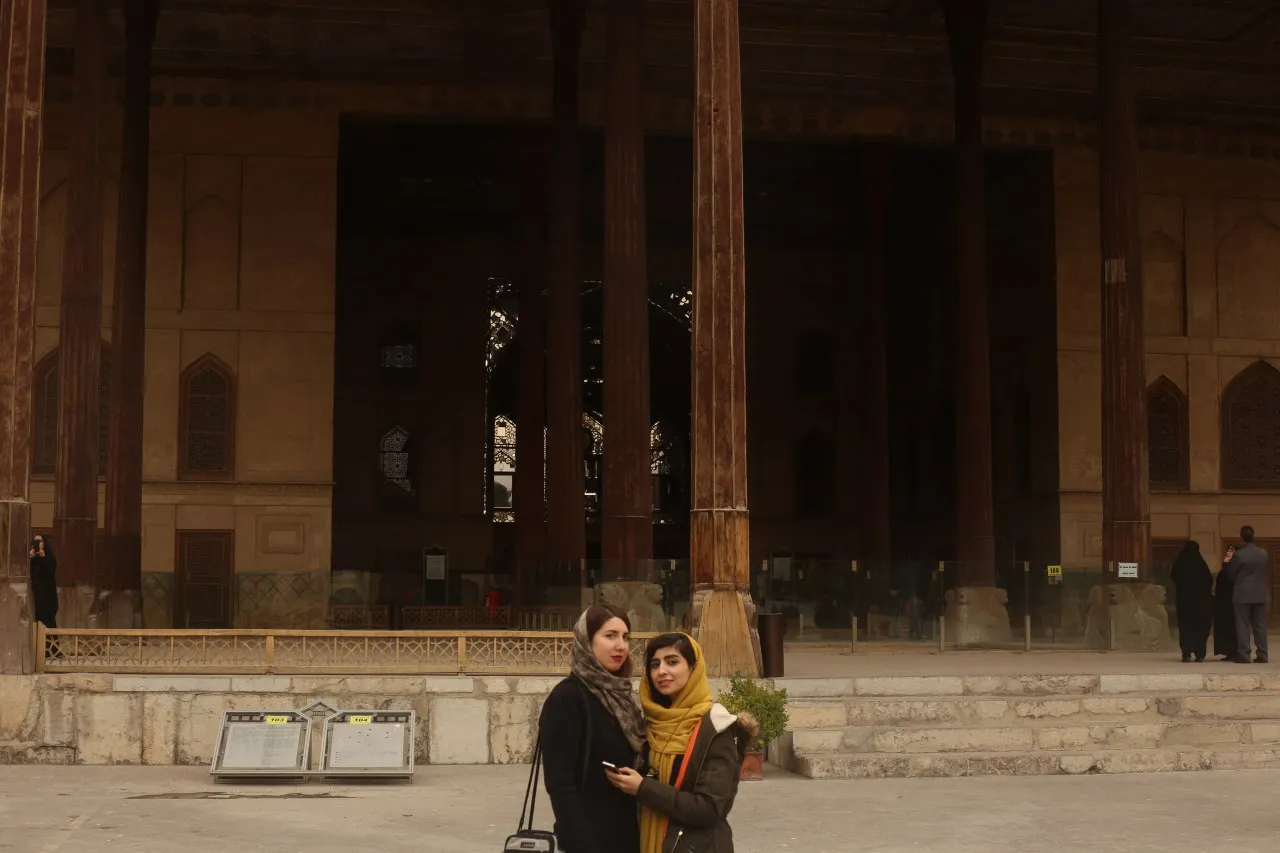
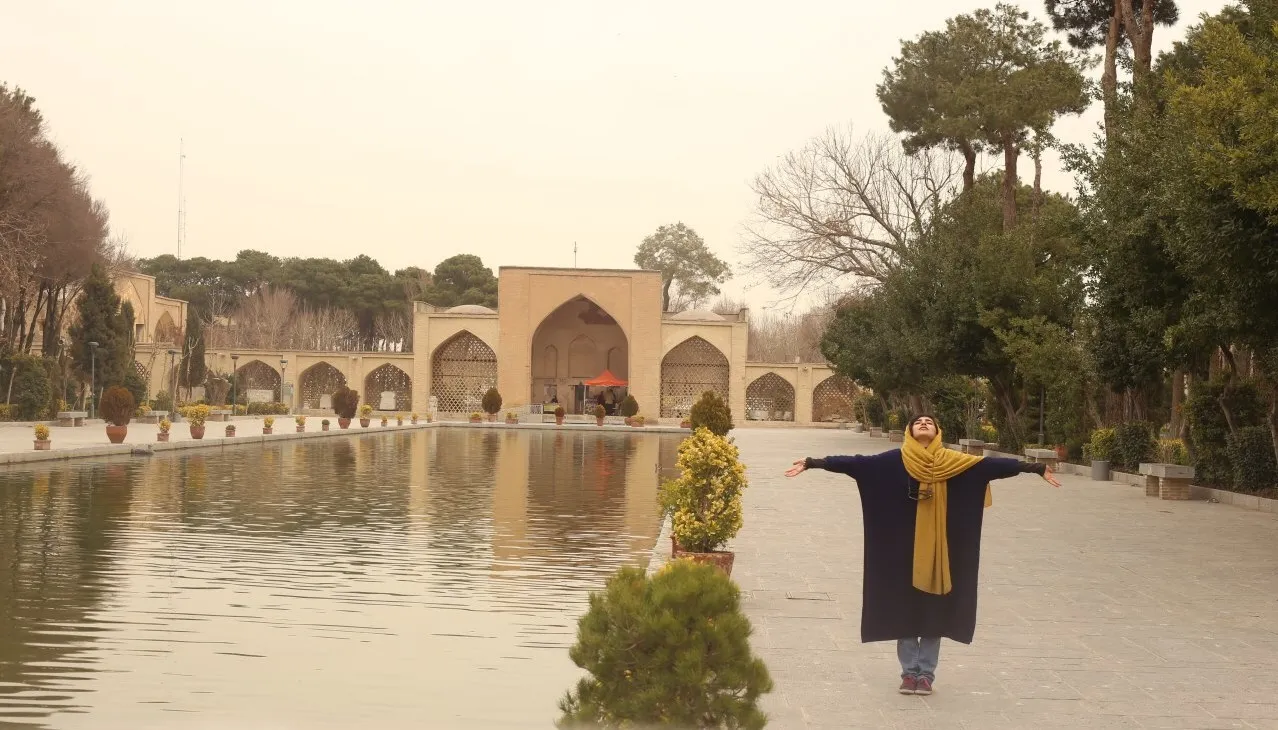
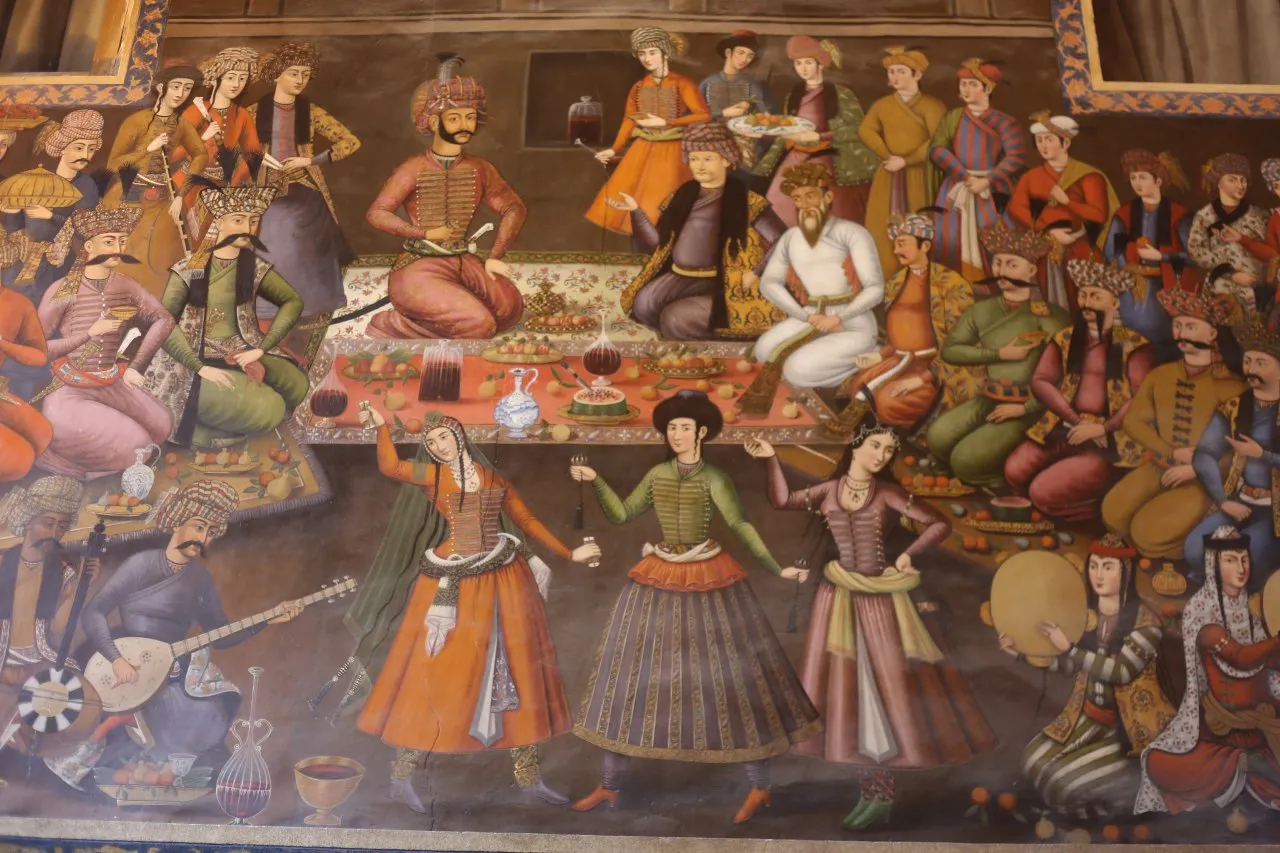
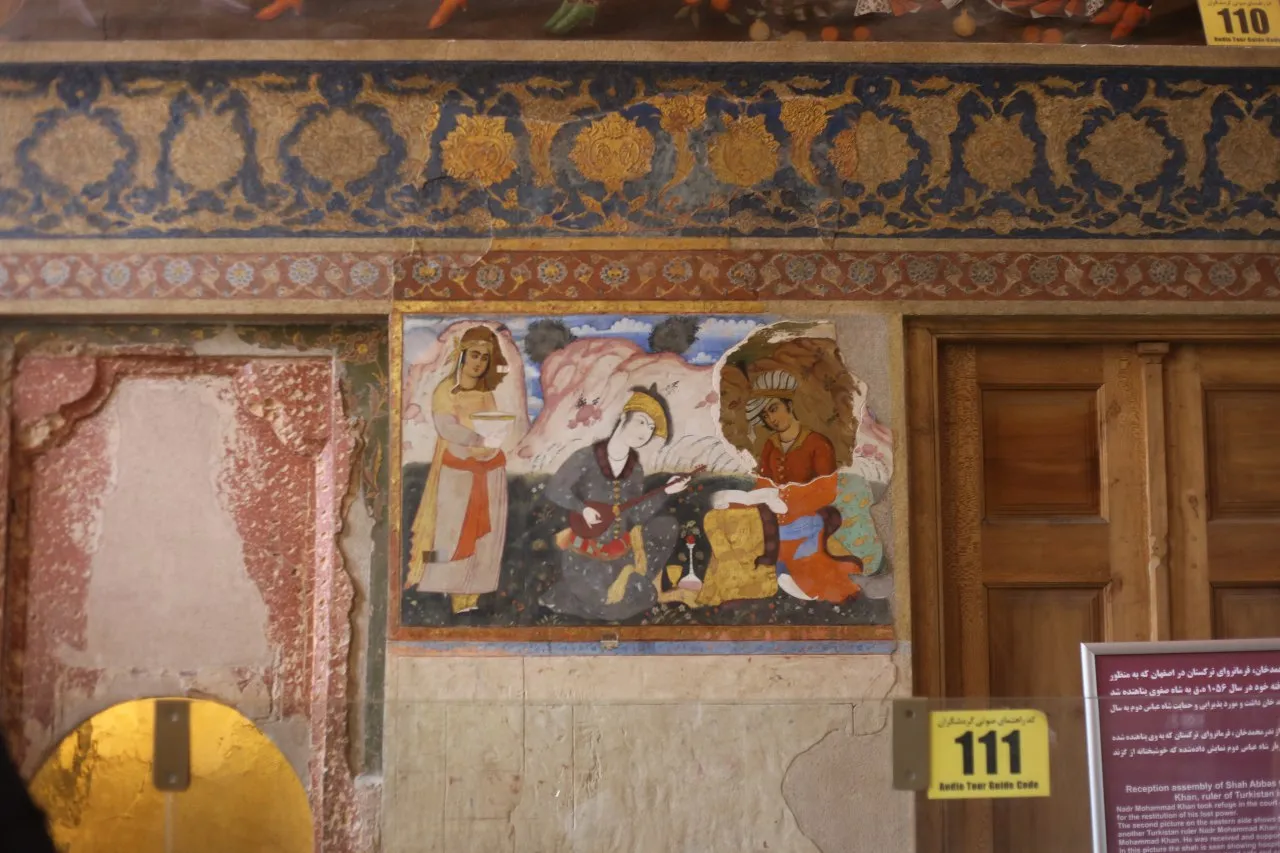
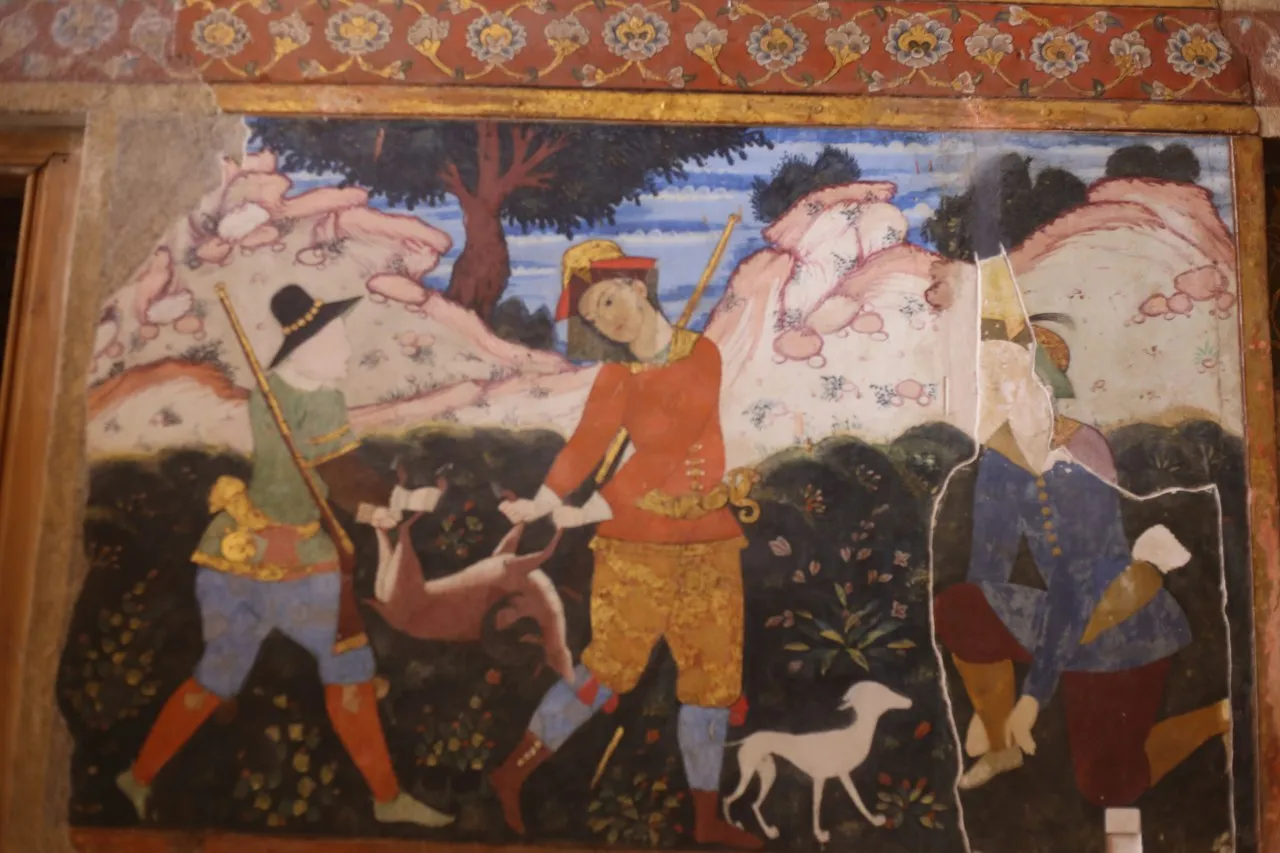

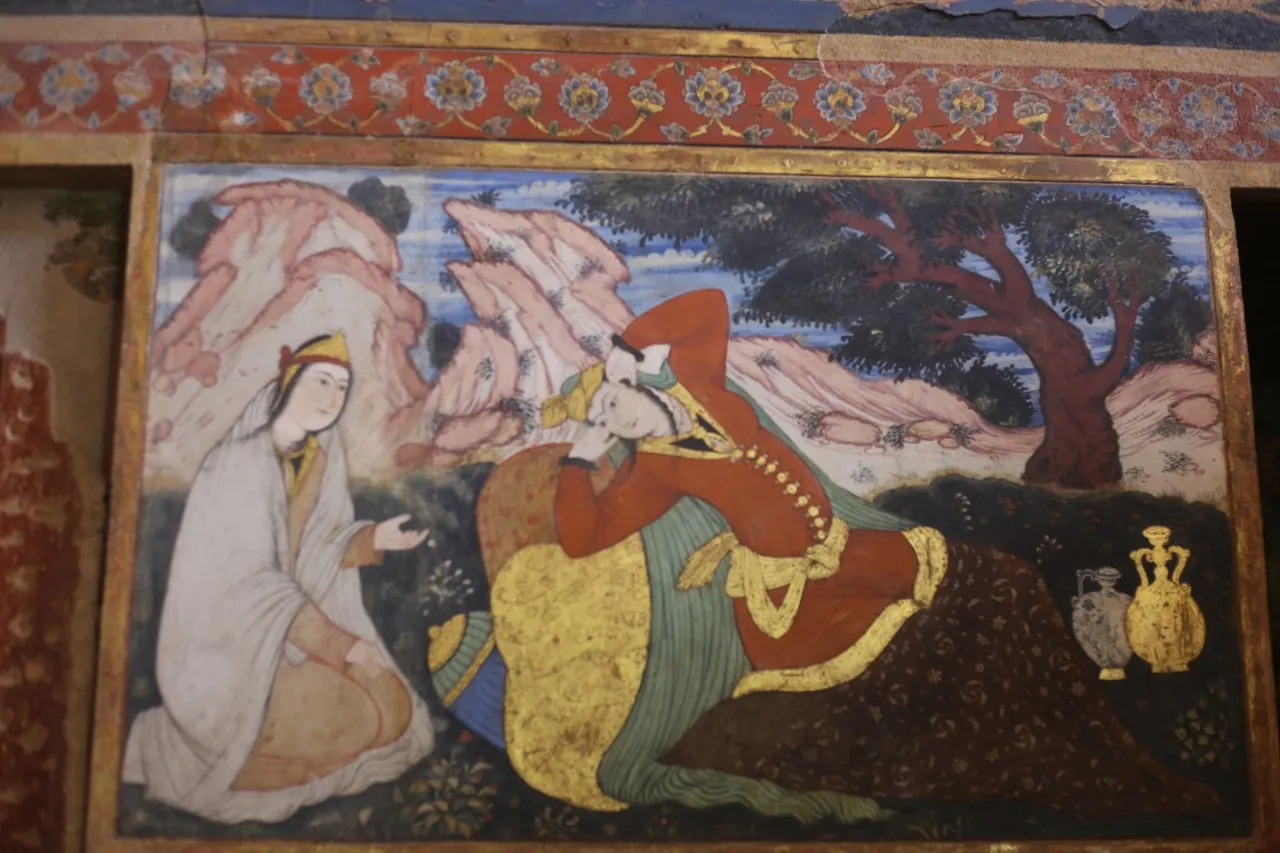
Here is Vank cathedral. One of the great Armenian Quarter, in Esfahan, Iran.
" One of the largest and most beautiful churches of Iran, the cathedral was completed in 1664. It includes a bell-tower, built in 1702, a printing press, founded by Bishop Khachatoor, a library established in 1884, and a museum opened in 1905.
The architecture of the building is a mixture of the 17th-century Safavid style with high arches and an Islamic-style dome.
The cathedral has greatly influenced the architecture and decorative treatment of many churches in Iran and the Mesopotamian region.
The main entrance of the cathedral is a large wooden door through which visitors enter the courtyard of the building.
Upon entering the courtyard, one encounters two rooms that were once used as administrative offices, which helped Armenians process their paperwork. "
" Following the Ottoman war of 1603-1605, Armenians began to arrive in Iran in search of a new life under the Safavid King Shah Abbas I.
Shah Abbas I, who settled tens of thousands of them in the Iranian provinces south of Aras River, also relocated Armenians, who had fled from the Ottoman massacre in Nakhchivan to Iran. Nakhchivan suffered a lot during the 14th to 18th century wars between Persia and the Ottoman Empire. The city fell under Safavid rule in the 16th century.
In 1604, when Shah Abbas I realized that the lands of Nakhchivan and its surrounding areas might fall into Ottoman hands, he decided to force the entire Muslim, Jewish and Armenian population of the city to leave their homes and move to Iran.
The Armenian immigrants settled in Isfahan, the capital of the Safavid Dynasty, and populated the city's New Jolfa district, which was named after their original homeland in today's Azerbaijan Republic.
Upon entering Iran, Armenian refugees started building churches and monasteries to continue their religious activities in their new home.
The first monastery in Jolfa was built in 1606 and included a little church called Amna Perkich, which means 'All Healing.'
The little church was later expanded and turned into the magnificently designed Vank Cathedral, which was built 50 years later under the supervision of Archbishop David. "
Admiring Artistic Expression of Christians in Isfahan, Iran.
" You might be surprised to find a Christian church in Iran. But I learned that several Christian enclaves exist peacefully inside the Islamic Republic of Iran. The Vank Cathedral in the Jolfa Armenian quarter of Isfahan is a gorgeous fusion of Armenian and Islamic architecture. Corridors of successive arches – a hallmark of I
slamic architecture - lead into a vibrantly painted room of Armenian and Christian iconography and typical Islamic geometrical designs. I stood astonished at the detail and depth of color, and grateful that this community has been granted its religious freedom and artistic expression. Included in the cathedral complex is a museum of the Armenian genocide perpetrated by the Turks in the early part of the 20th century. Armenians fled to Isfahan for asylum and safety, and remain there today. Isfahan is brimming with spectacular religious architecture, but a cathedral was not among the sights I had expected to see! "
By Shara Johnson (SKJ Traveler).
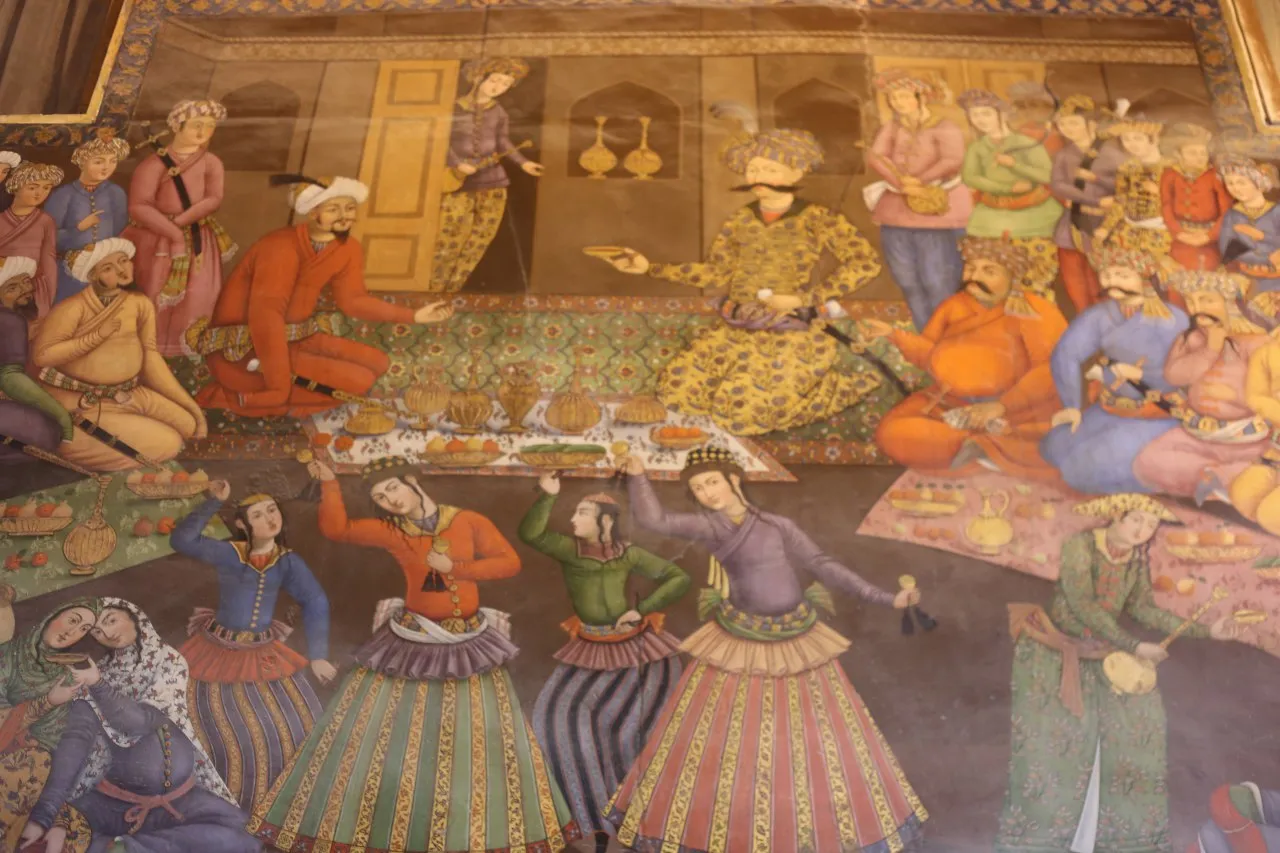
Let's read the opinions of the tourists who visited this church:
" A cathedral was unexpected but it has a nice mix of architectures and go inside and see the vibrant icons and paintings covering the walls and ceilings. Well worth a visit and different to the tiled mosques. There is a museum about the Armenian Genocide which has some lovely bibles and other old items.
Has a nice gift shop."" Very unexpected Cathedral beautifully decorated inside with an interesting Museum alongside
This place was quite unexpected given we had been seeing Mosques in large quantities.
The cathedral was established in 1606, dedicated to the hundreds of thousands of Armenian deportees that were resettled by Shah Abbas I during the Ottoman War of 1603-1618.The internal decoration is simply stunning in both design and colour.
The museum alongside gives reports of the Armenian deportation and the cruelty metered out to them.
It also houses lots of ancient bibles and artifacts which are well weorth a visit.
Tucked away in the Armenian quarter and close to some cafes and pastry shops in case you need sustenance :) "" A Memorable church
It's a really nice church which is special in the way that they mixed both Islamic and Christian architecture in here. The church has a mosque like dome and very beautiful painting which goes back to the safavied period.
It has also a museum inside, which is not so reach but worth to have a quick look. "
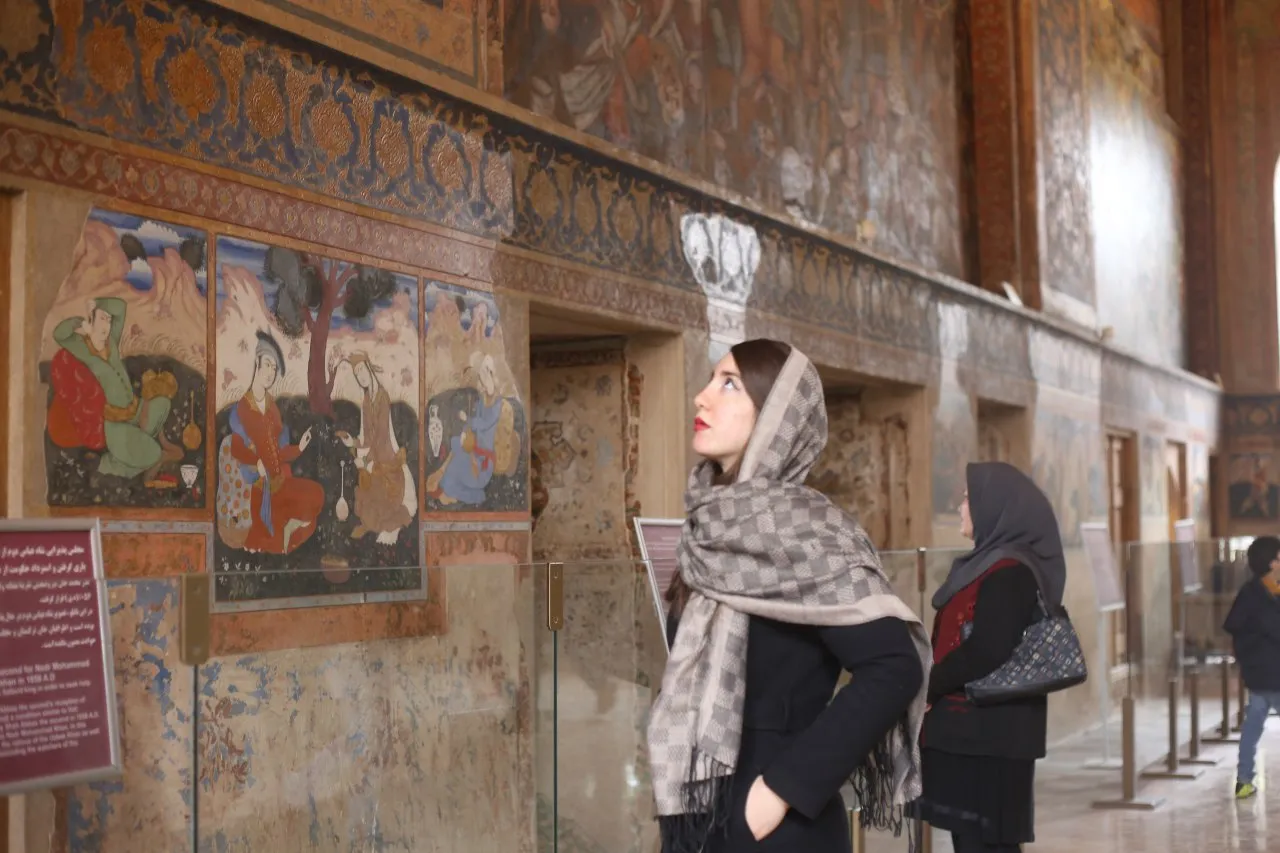
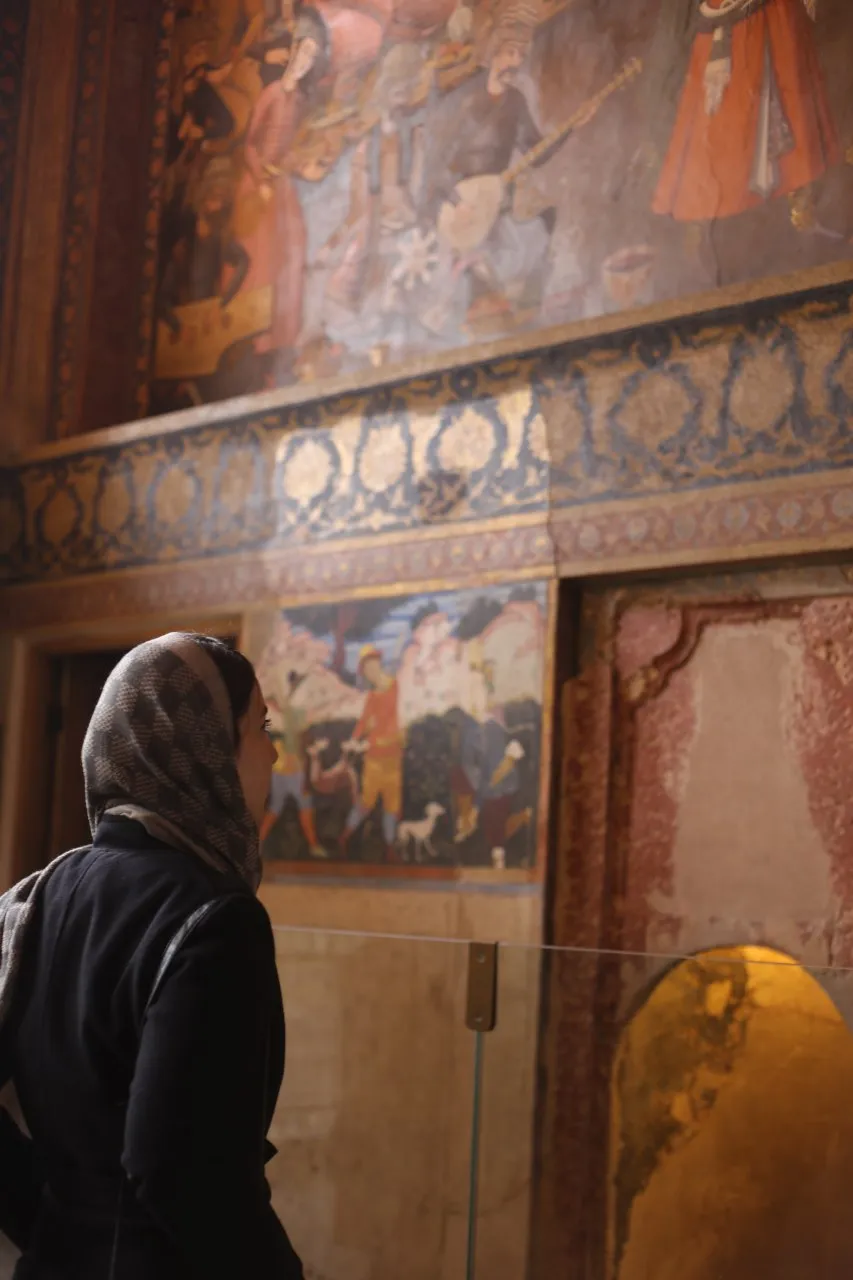
" A large freestanding belfry stands in the cathedral courtyard and towers over the graves of Orthodox and Protestant Christians who have been buried along the wall before the entrance.
Built 38 years after the main structure, the belfry leads into the nave.
On the right side of the belfry there is a large blue inscription surrounded by crucifix stones. The stones have been collected from the ruined churches of the Jolfa quarter.
On a raised area to the left, a memorial has been set up in memory of the victims of the Ottoman massacre. Every year on April 23 Armenians gather by the memorial to light candles in honor of their martyrs.
At a corner of the cathedral's courtyard, rooms and halls have been built to accommodate guests, the Isfahan archbishop and his retinue, as well as other Armenian religious authorities in Iran.
Across the courtyard and facing the cathedral is a building, which houses the Vank library and museum.
The library contains more than 700 manuscripts and hard-to-find sources on Armenian and medieval European languages and arts.
The Vank museum houses unique and priceless collections of various types of items gathered from across the Armenian world. "
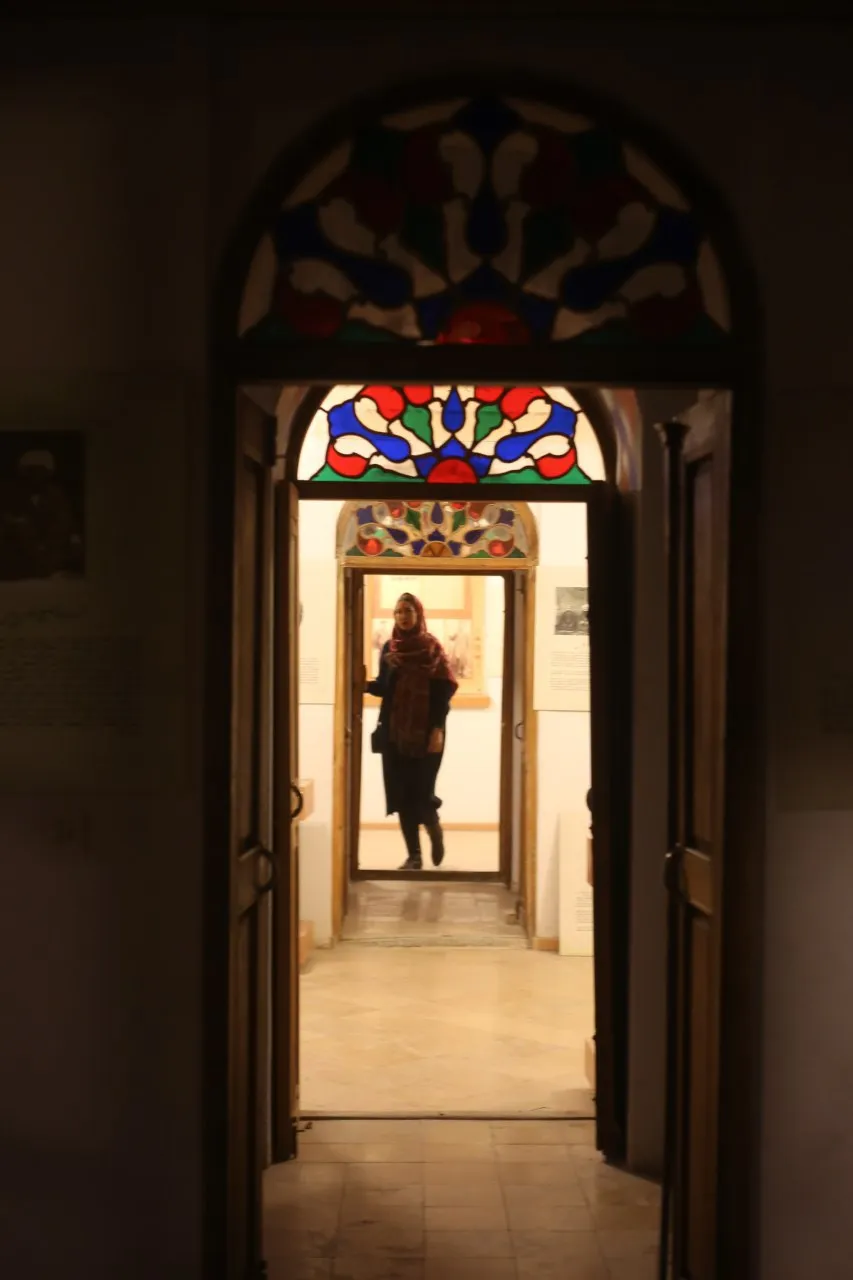
" Built in 1871, the museum contains numerous objects related to the history of the cathedral and the Armenian community of Isfahan, including the 1606 edict of Shah Abbas I establishing New Jolfa and prohibiting interference with, or the persecution of, Armenians and their property and affairs in the district.
Exquisite Bibles are also part of the museum's dazzling collection. A
seven-gram bible displayed at the museum is believed by some to be the world's smallest written text in seven languages.
Safavid costumes, tapestries, European paintings brought back by Armenian merchants, embroideries and other valuable items from the Iranian-Armenian trading heritage are also part of the museum's unique archive.
The Vank museum also houses an extensive collection of photographs, maps, and Turkish documents related to the 1915 massacre of Armenians by Ottoman kings.
Vestments, monstrances, chalices and other sacramental objects have also been displayed at the museum. "
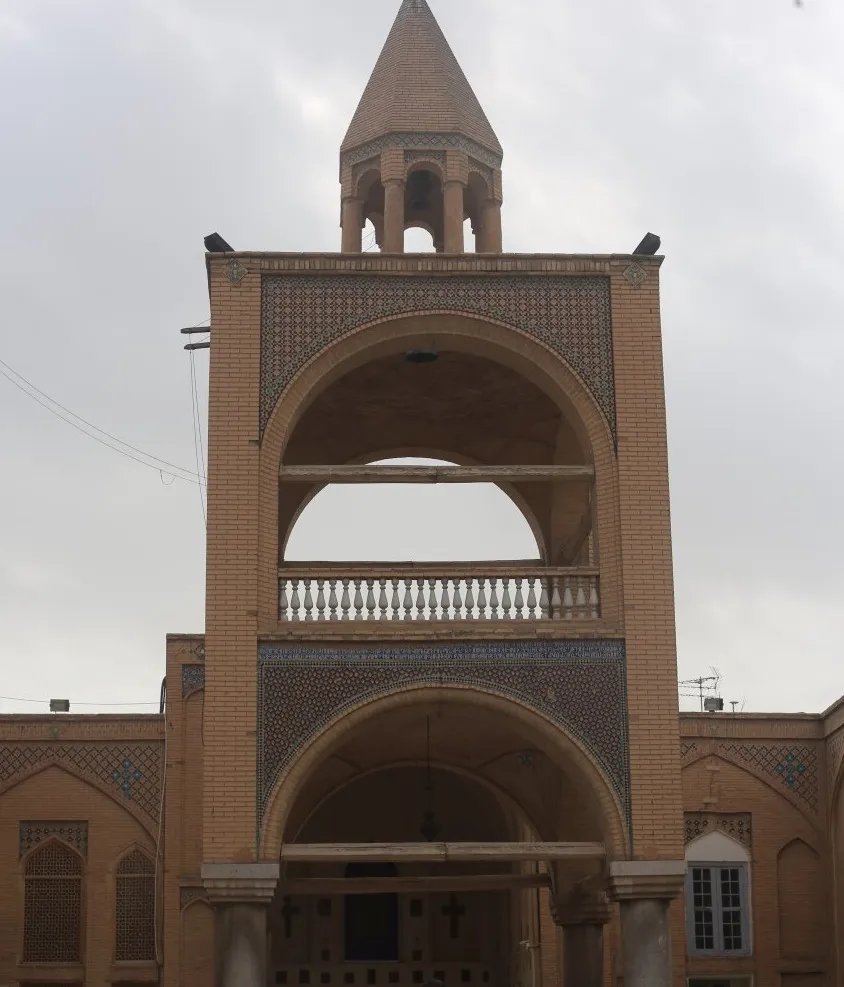
" The Vank printing house is known as the first of its kind in Iran and the Middle East. The first book published at Vank was about the lives of Armenian priests and monks, a few prints of which are now kept at the Vank museum.
The early printing machine, which was built by Bishop Khachatoor, was replaced by a new one brought from Amsterdam in 1647.
Later in 1844, an Armenian resident of Jolfa brought a printing machine from Europe, which is also housed at Vank Museum.
The first book printed by the machine was the Psalms of David, which is now kept at Oxford's Bodleian Library.
The dun-colored brick exterior of the cathedral gives way to a stunning combination of Persian tiles, Byzantine gold and European-style frescos inside.
The modern and plain exterior has a striking contrast with its gloriously decorated interior.
The entrance ceiling is adorned with floral motifs and the top of the walls are covered with murals depicting events from the life of Jesus.
The interior is adorned with paintings, gilded carvings and eye-catching tilework and the pendentives bear painted images of a cherub's head surrounded by folded wings.
On the northern wall of the cathedral paintings of Judgment Day can be seen with heaven depicted above and hell below.
The bottom parts of the interior walls are covered with paintings depicting Armenians being tortured by the Ottoman Turks.
The double-layer brick dome is beautifully gilded and adorned with paintings and floral patters in its azure interior.
The paintings depict the Biblical story of the creation of the universe and man's expulsion from Eden. "
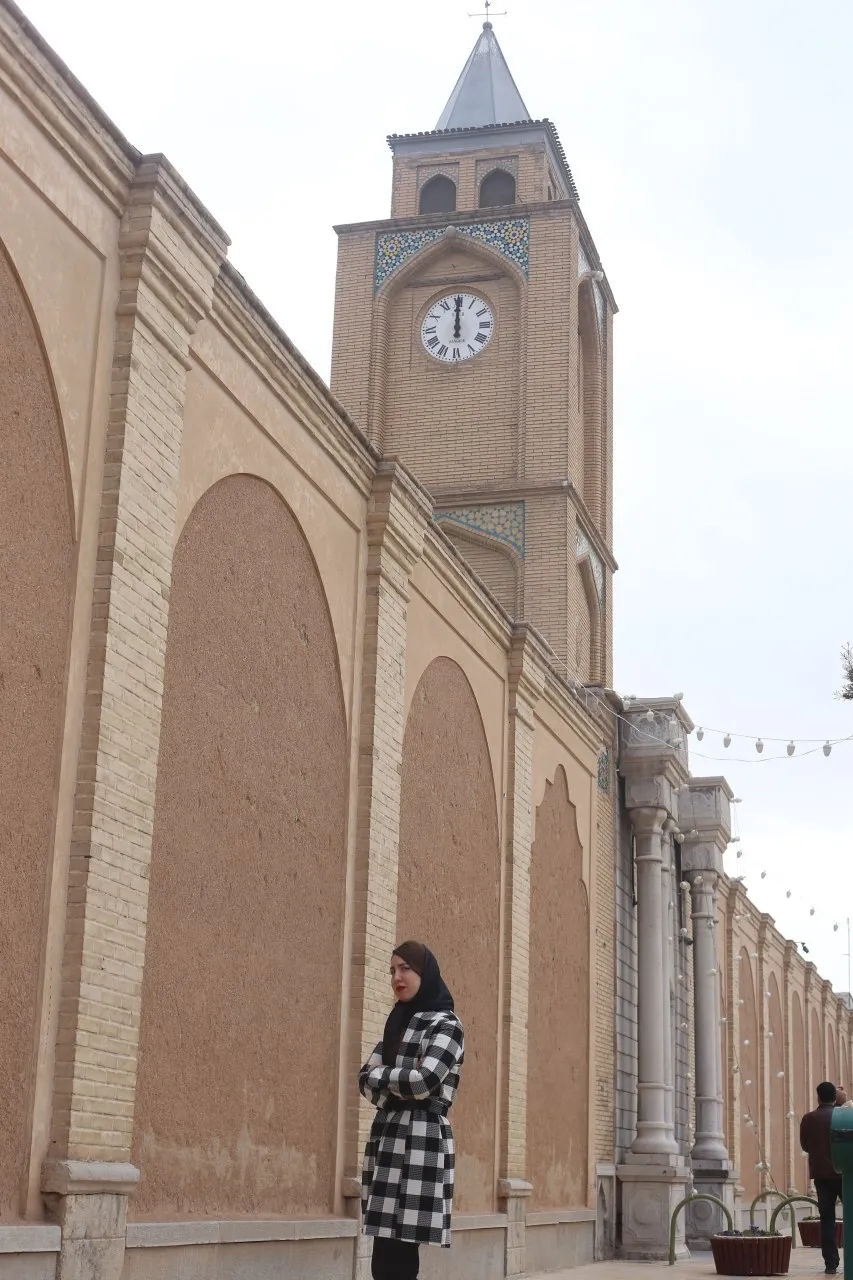
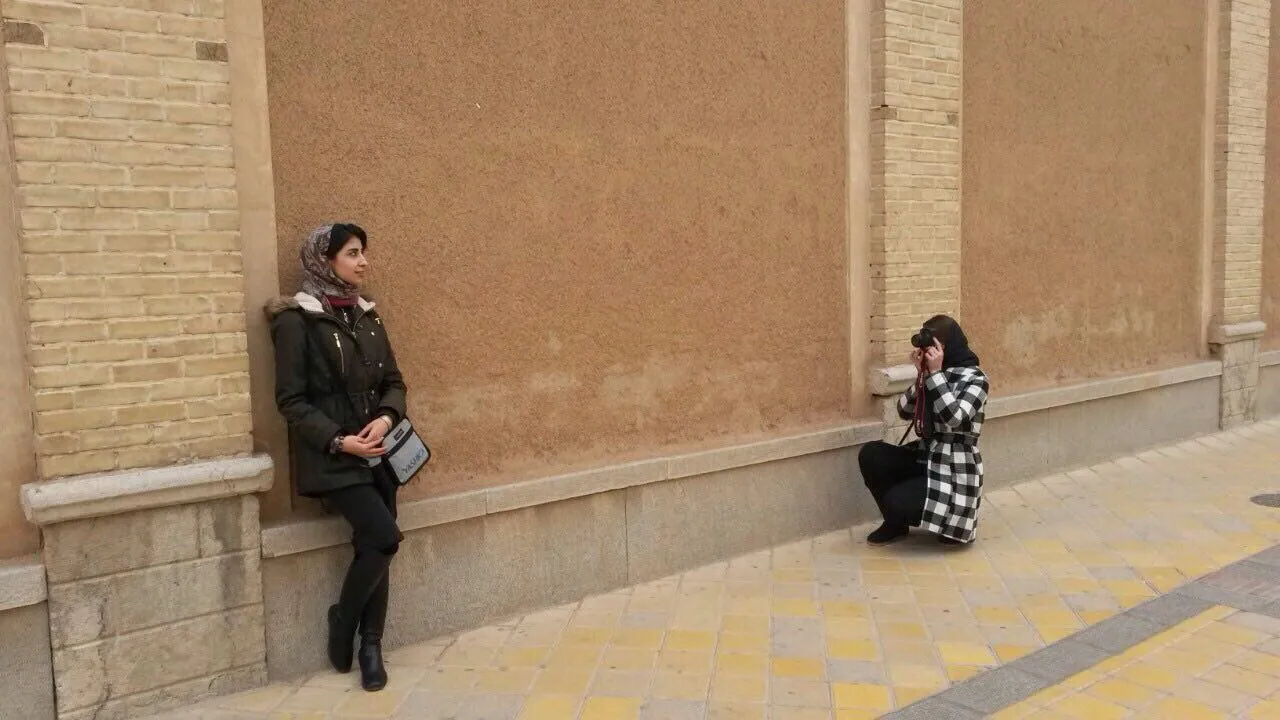
" 8/23/10
Wonders of Iran: Vank Cathedral
By Tamara Ebrahimpour, Press TV
Vank Cathedral, Armenian Quarter, Esfahan, Iran (photo by Mike Gadd)
Following the Ottoman war of 1603-1605, Armenians began to arrive in Iran in search of a new life under the Safavid King Shah Abbas I.
Shah Abbas I, who settled tens of thousands of them in the Iranian provinces south of Aras River, also relocated Armenians, who had fled from the Ottoman massacre in Nakhchivan to Iran.
Nakhchivan suffered a lot during the 14th to 18th century wars between Persia and the Ottoman Empire. The city fell under Safavid rule in the 16th century.
In 1604, when Shah Abbas I realized that the lands of Nakhchivan and its surrounding areas might fall into Ottoman hands, he decided to force the entire Muslim, Jewish and Armenian population of the city to leave their homes and move to Iran.
The Armenian immigrants settled in Isfahan, the capital of the Safavid Dynasty, and populated the city's New Jolfa district, which was named after their original homeland in today's Azerbaijan Republic.
Upon entering Iran, Armenian refugees started building churches and monasteries to continue their religious activities in their new home.
The first monastery in Jolfa was built in 1606 and included a little church called Amna Perkich, which means 'All Healing.'
The little church was later expanded and turned into the magnificently designed Vank Cathedral, which was built 50 years later under the supervision of Archbishop David.
Vank Cathedral in Isfahan
One of the largest and most beautiful churches of Iran, the cathedral was completed in 1664. It includes a bell-tower, b
uilt in 1702, a printing press, founded by Bishop Khachatoor, a library established in 1884, and a museum opened in 1905.
The architecture of the building is a mixture of the 17th-century Safavid style with high arches and an Islamic-style dome.
The cathedral has greatly influenced the architecture and decorative treatment of many churches in Iran and the Mesopotamian region.
The main entrance of the cathedral is a large wooden door through which visitors enter the courtyard of the building.
Upon entering the courtyard, one encounters two rooms that were once used as administrative offices, which helped Armenians process their paperwork.
Inside the Armenian Cathedral of the Holy Savior (photo by raeabileah)
A large freestanding belfry stands in the cathedral courtyard and towers over the graves of Orthodox and Protestant Christians who have been buried along the wall before the entrance.
Built 38 years after the main structure, the belfry leads into the nave.
On the right side of the belfry there is a large blue inscription surrounded by crucifix stones. The stones have been collected from the ruined churches of the Jolfa quarter.
On a raised area to the left, a memorial has been set up in memory of the victims of the Ottoman massacre. Every year on April 23 Armenians gather by the memorial to light candles in honor of their martyrs.
At a corner of the cathedral's courtyard, rooms and halls have been built to accommodate guests, the Isfahan archbishop and his retinue, as well as other Armenian religious authorities in Iran.
Across the courtyard and facing the cathedral is a building, which houses the Vank library and museum.
The library contains more than 700 manuscripts and hard-to-find sources on Armenian and medieval European languages and arts.
The Vank museum houses unique and priceless collections of various types of items gathered from across the Armenian world.
The courtyard of the Vank Cathedral with museum at the right (photo by Thomas)
Built in 1871, the museum contains numerous objects related to the history of the cathedral and the Armenian community of Isfahan, including the 1606 edict of Shah Abbas I establishing New Jolfa and prohibiting interference with, or the persecution of, Armenians and their property and affairs in the district.
Exquisite Bibles are also part of the museum's dazzling collection. A seven-gram bible displayed at the museum is believed by some to be the world's smallest written text in seven languages.
Safavid costumes, tapestries, European paintings brought back by Armenian merchants, embroideries and other valuable items from the Iranian-Armenian trading heritage are also part of the museum's unique archive.
The Vank museum also houses an extensive collection of photographs, maps, and Turkish documents related to the 1915 massacre of Armenians by Ottoman kings.
Vestments, monstrances, chalices and other sacramental objects have also been displayed at the museum.
View over Julfa, Isfahan's Armenian Quarter. Visible on the right is the 17th century Armenian Cathedral of the Holy Savior, also known as Vank Cathedral (photo by Narcotica)
The Vank printing house is known as the first of its kind in Iran and the Middle East. The first book published at Vank was about the lives of Armenian priests and monks, a few prints of which are now kept at the Vank museum.
The early printing machine, which was built by Bishop Khachatoor, was replaced by a new one brought from Amsterdam in 1647.
Later in 1844, an Armenian resident of Jolfa brought a printing machine from Europe, which is also housed at Vank Museum.
The first book printed by the machine was the Psalms of David, which is now kept at Oxford's Bodleian Library.
The dun-colored brick exterior of the cathedral gives way to a stunning combination of Persian tiles, Byzantine gold and European-style frescos inside.
The modern and plain exterior has a striking contrast with its gloriously decorated interior.
The entrance ceiling is adorned with floral motifs and the top of the walls are cove
red with murals depicting events from the life of Jesus.
The interior is adorned with paintings, gilded carvings and eye-catching tilework and the pendentives bear painted images of a cherub's head surrounded by folded wings.
On the northern wall of the cathedral paintings of Judgment Day can be seen with heaven depicted above and hell below.
The bottom parts of the interior walls are covered with paintings depicting Armenians being tortured by the Ottoman Turks.
The double-layer brick dome is beautifully gilded and adorned with paintings and floral patters in its azure interior.
The paintings depict the Biblical story of the creation of the universe and man's expulsion from Eden.
An Armenian fresco depicting Heaven, Earth, and Hell, at the Vank Cathedral
(photo by illuheaven)
Eight windows surround the dome with biblical scenes painted between them. The creation of Adam and Eve, eating the forbidden fruit and the death of Able are among the stories painted between the windows.
The narthex is also adorned with four paintings, which are surrounded with floral patterns and show tortures inflicted upon holy figures.
The birth of Jesus, the Last Supper, the crucifixion of Jesus and the Ascension of Jesus are also among the biblical stories depicted in the paintings inside the cathedral.
The paintings have been inspired by both old and new testaments and have been painted by Armenian masters and three monks, namely; Havans, Stepanus and Minas.
After the death of Shah Abbas I, his successor Shah Abbas II also paid close attention to Armenians and New Jolfa, which is located on the banks of the Zayandeh River and still houses a large part of the Iranian-Armenian community.
Iran's Armenian community grew in number as until 1933 immigrants and refugees continued to flock to Iran from the Soviet Union.
They built churches, schools and various cultural, artistic and sports centers across the country and eventually became Iran's largest Christian community.
Today, Iranian-Armenians have two seats in the Iranian Parliament (Majlis) and are the only minority with official observing status in the country's Guardian and Expediency Councils.
Armenians also publish books, journals, periodicals, and newspapers, including the daily Alik. "
